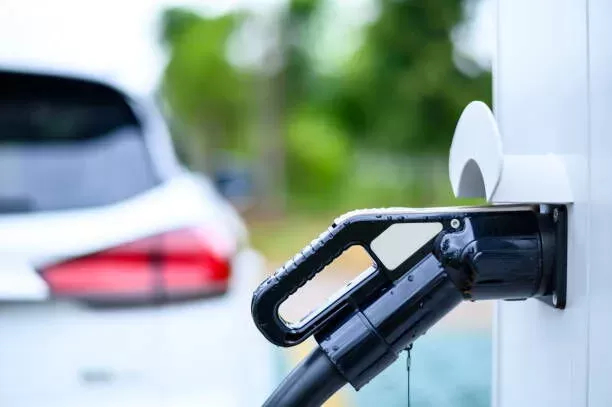Notifications

8 minutes, 52 seconds
-59 Views 0 Comments 0 Likes 0 Reviews

The popularity of electric vehicles (EVs) continues to rise, and with it, the need for a deeper understanding of the various EV charging connector types. As EVs become more mainstream, having the right charging connector for your vehicle ensures an optimal and efficient charging experience. In this article, we’ll break down the most common charging connectors, their applications, and how they fit into the growing EV landscape.As a professional EV charger manufacturer in China, Topper Company provides dependable electric vehicle charging station equipment and comprehensive solutions.
Alternating current (AC) charging is the most common method for everyday EV charging. It is typically split into two levels, each catering to different charging needs: Level 1 and Level 2.
Level 1 charging is the most accessible form of EV charging, using a standard 120-volt household outlet. While it’s convenient, it’s relatively slow, adding only 3 to 5 miles of range per hour of charging. It’s ideal for overnight charging or short commutes, but if you need faster charging, Level 2 is a better option.
Level 2 charging uses a 240-volt power supply and can deliver up to 40 miles of range per hour, making it significantly faster than Level 1. It requires a dedicated charging station, like the LiCB Charge, which can be installed at home or found at public stations such as shopping centers or parking garages. Level 2 charging strikes a balance between speed and accessibility, making it the go-to for most EV owners.
In North America, two main connector standards are used for AC charging:
SAE J1772: This is the standard for most non-Tesla EVs and works with both Level 1 and Level 2 charging. It is widely available at public charging stations.
NACS (Tesla Connector): Developed by Tesla, this connector is exclusive to Tesla vehicles but has the potential for broader adoption as Tesla opens its network to other EVs.
While AC charging is sufficient for everyday use, DC fast charging is the go-to for long-distance travel or when you need a rapid top-up. DC charging bypasses the vehicle's onboard charger and delivers power directly to the battery, drastically reducing charging times.
In North America, there are three main types of DC fast charging connectors:
SAE Combo (CCS1): This combined charging system (CCS) is widely used in North America. The CCS1 connector builds on the SAE J1772, adding two additional DC pins for fast charging, with power levels reaching up to 350 kW.
CHAdeMO: Originating from Japan, CHAdeMO is a fast-charging standard still used by some older EVs, particularly those from Japanese manufacturers. However, its popularity has waned due to the rise of CCS.
NACS (Tesla Connector): Tesla’s proprietary connector also supports both AC and DC fast charging. Though mainly used by Tesla vehicles, the company’s decision to open up its Supercharger network to other manufacturers could expand the reach of NACS.
As EV technology continues to advance, so does the demand for faster charging solutions. Chargers with power levels of 150 kW, 270 kW, and even 350 kW are becoming more common. These high-power chargers can add hundreds of miles of range in just minutes, making them ideal for long-distance travel.
The Combined Charging System (CCS) is quickly becoming the dominant DC fast charging standard worldwide. It combines both AC and DC charging capabilities in a single connector, simplifying the charging process and reducing the need for multiple ports on vehicles.
CCS connectors come in two variants:
CCS Type 1: Primarily used in North America, it adds two additional DC pins to the SAE J1772 connector.
CCS Type 2: Used in Europe, this version is based on the Mennekes Type 2 connector and also adds two DC pins for fast charging.
Versatility: It supports both AC and DC charging through one connector.
High Power: CCS supports power levels up to 350 kW, allowing for rapid charging.
Global Standard: CCS is quickly becoming the most widely adopted fast-charging standard.
While CCS is becoming the standard, compatibility with other systems like CHAdeMO and GB/T is an issue. Adapters are available but may not provide the best charging experience, making standardization efforts important for the future.
Despite its decreasing market share, CHAdeMO remains important, particularly for certain Japanese EVs.
Bidirectional Charging: CHAdeMO supports vehicle-to-grid (V2G) technology, allowing vehicles to return power to the grid.
Compatibility: Its incompatibility with CCS and GB/T limits its use in regions dominated by those standards.
In China, the GB/T standard is the main connector for both AC and DC charging. It supports fast charging and high-power capabilities, with power levels up to 250 kW.
Although primarily used in China, the growing global presence of Chinese automakers could increase the influence of the GB/T standard. However, its incompatibility with other standards like CCS and CHAdeMO could hinder its adoption outside China.
Tesla’s North American Charging Standard (NACS) is unique in that it supports both AC and DC fast charging.
Compact Design: The connector is smaller and more user-friendly than other options.
High Power: It can support power levels of up to 250 kW.
While NACS is currently limited to Tesla vehicles, the company’s move to open its Supercharger network could lead to broader adoption. However, its proprietary nature might limit its appeal to non-Tesla EV manufacturers.
As the EV market expands, it’s crucial to understand the different charging connector types to ensure a seamless charging experience. Whether you’re using AC charging for everyday use or DC fast charging for long-distance travel, knowing the right connector for your EV will help maximize your vehicle’s potential. The future of EV charging looks promising with increased availability of high-power chargers and a growing standardization of connectors, making electric vehicle ownership more accessible and efficient than ever before.Know more about Google SEO Directory
China EV Chargers EV Charger Manufacturer EV Charging Solutions

